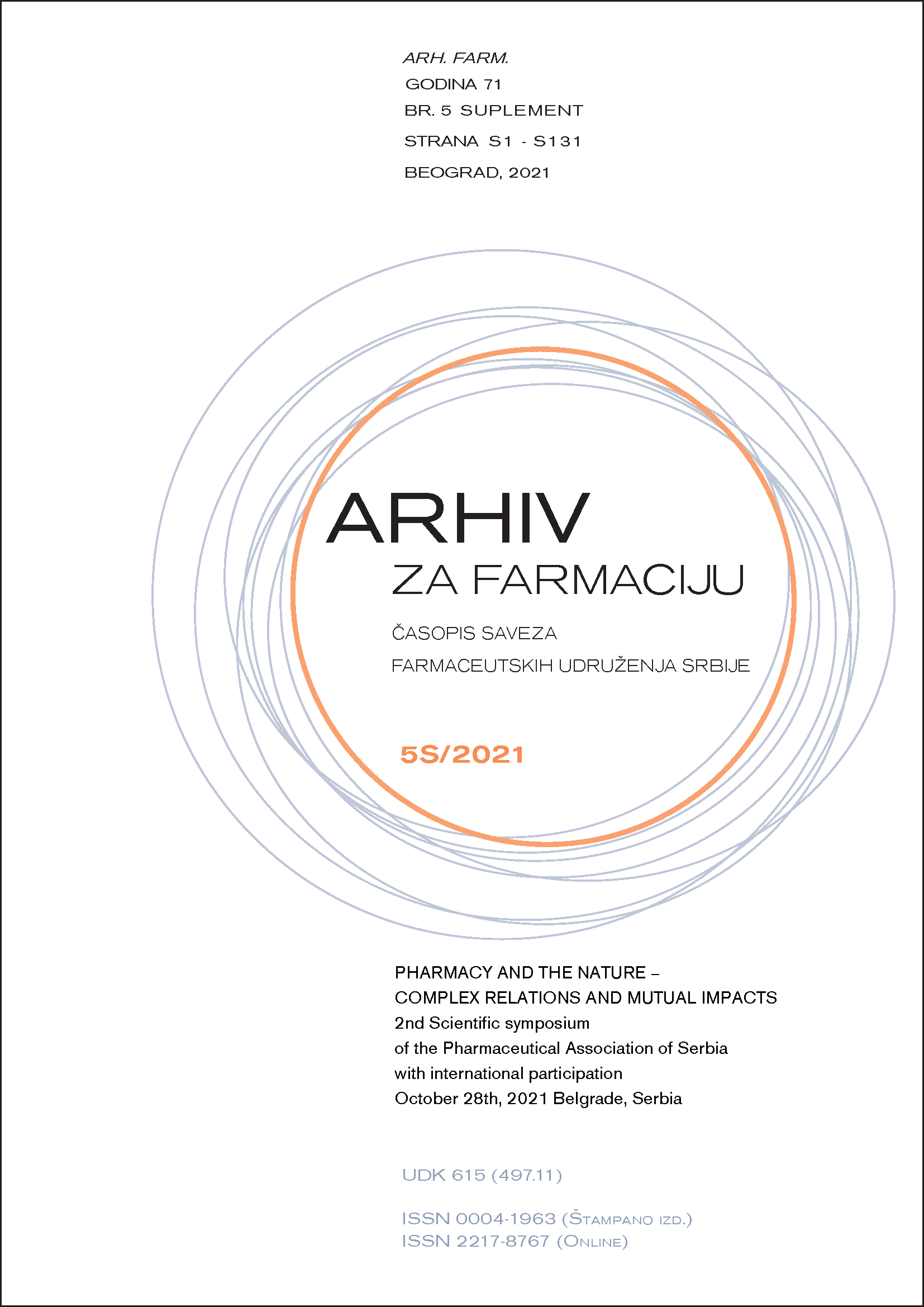HYDROLATES: FROM WASTE PRODUCTS TO POTENTIAL COSMETIC ACTIVES
Abstract
Hydrolates, also known as hydrosols, aromatic waters, floral or distillate waters are the side products of essential oils extraction process. One other synonym is also plant aromatic waste since they are mostly considered as the waste product of industrial hydrodistillation of aromatic herbal species. As mixtures containing a variable small amount of water-soluble fraction of essential oil and in contrast to the pure essential oils, they are moderate in their biological activity. Most hydrolates are acidic liquids with pleasant to unpleasant and from similar to dissimilar odour to the corresponding essential oil (1).
To estimate potential topical application of six hydrolates (obtained after hydrodistillation of Melisae officinalis herba – A, Daucus carotae semen – B, Thymi vulgaris herba – C, Lavandulae officinalis flos – D, Hyssopi officinalis herba – E, and Chamomillae romanae flos – F) pH value and odour, in vitro antioxidant activity and in vivo safety and efficacy on human volunteers’ skin (2) were quantified and compared. Bearing in mind that hydrosolates obtained in the early and in the latter parts of distillation differ in odour notes and chemical composition, all tested samples were collected in the first hour of distillation process. pH values ranged from 4.08 to 6.16. Although all hydrolates exerted radical scavenging activity against a stable free radical 1,1-diphenyl-2-picrylhydrazyl (DPPH) (3), only Thymus hydrolat (sample C) reached IC50 value (concentration of sample required for scavenging 50% of the free DPPH radical) (Figure 1). In vivo measurements of relevant skin parameters were conducted on healthy human skin of 22 (18 female, 4 males; age 20 to 51, mean age 26.73±3.06 years) volunteers. A Multi Probe Adapter MPA® 9 was used for assessing transepidermal water loss (TEWL), skin pH and erythema index (EI). The safety of undiluted hydrolates on human skin was estimated during 24h exposure under occlusion, while efficacy was tested on artificially irritated skin (using sodium lauryl sulfate) following 5 days treatment. The results show that the hydrolates are safe for topical use (there is no significant difference between the measured parameters before and after 24h exposure) and could be beneficial on irritated skin. They all accelerated the pre-irritated skin recovery process although without statistical significance between the samples.
Although researchers interested in hydrolates investigation focus mostly on their antimicrobial activity, these ,,aromatic wastes’’ could also present promising cosmetic actives.

